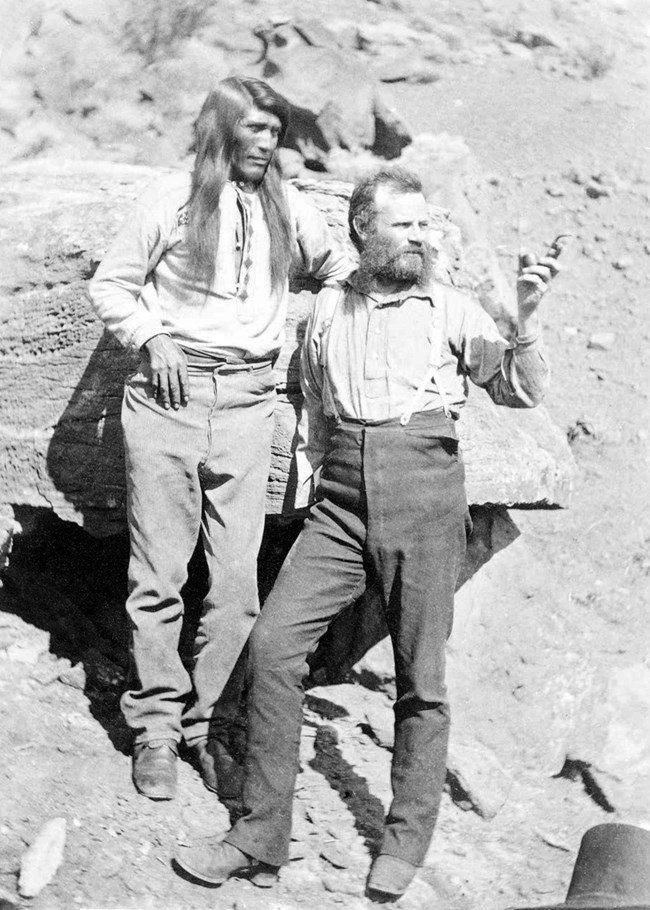
NPS Photo For early European explorers, the maze of canyons found here seemed impenetrable. Settlers looked to indigenous people, whose navigation routes were economically important on a regional scale, and even considered sacred. A major north-south trade route crossed the Colorado River near what is now Moab. This route was the basis for the “Old Spanish Trail,” which remains a well-travelled route to this day. The first Europeans to explore the heart of Canyonlands were likely trappers searching western rivers for beaver and otter in the early 19th century. The Macomb expedition of 1859 saw the pinnacles of The Needles while exploring just northwest of there. Perhaps the most famous explorer of the region was John Wesley Powell, who led the 1869 expedition from Wyoming down the Green and Colorado rivers, and through the Grand Canyon in Arizona. During the three-month trip, Powell mapped the canyons and recorded information about the natural and cultural history of the area, which was published in 1895 as The Exploration of the Colorado and Its Canyons. In the latter 19th century, pioneers and missionaries of the Church of Jesus Christ of Latter-day Saints (LDS) moved into the Canyonlands area. Most early LDS settlers relied on farming, ranching, and prospecting to make their living. |
Last updated: April 18, 2025
